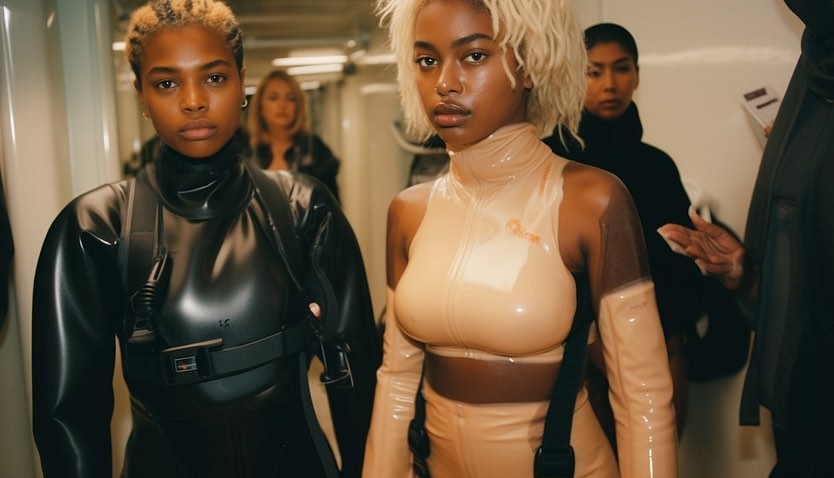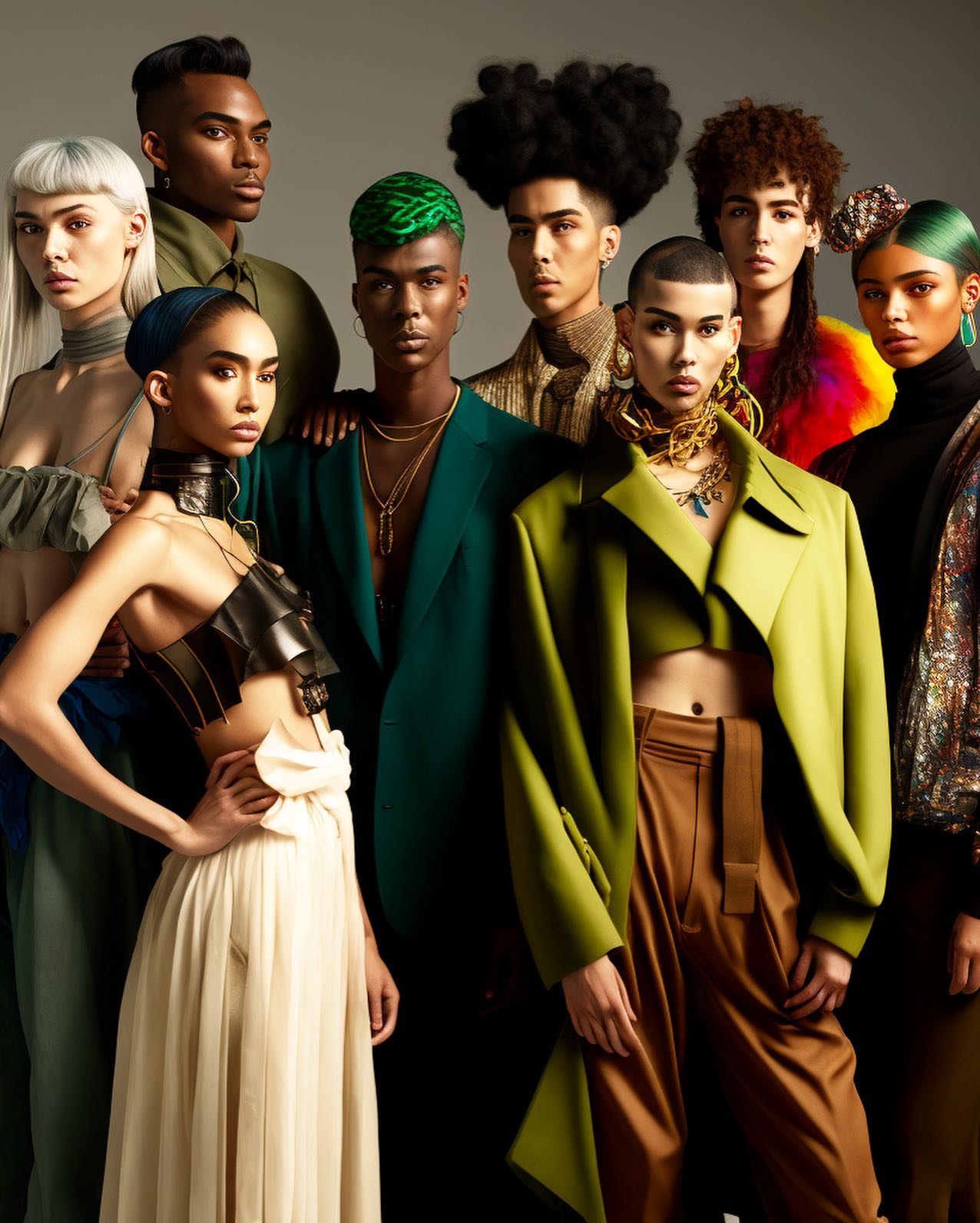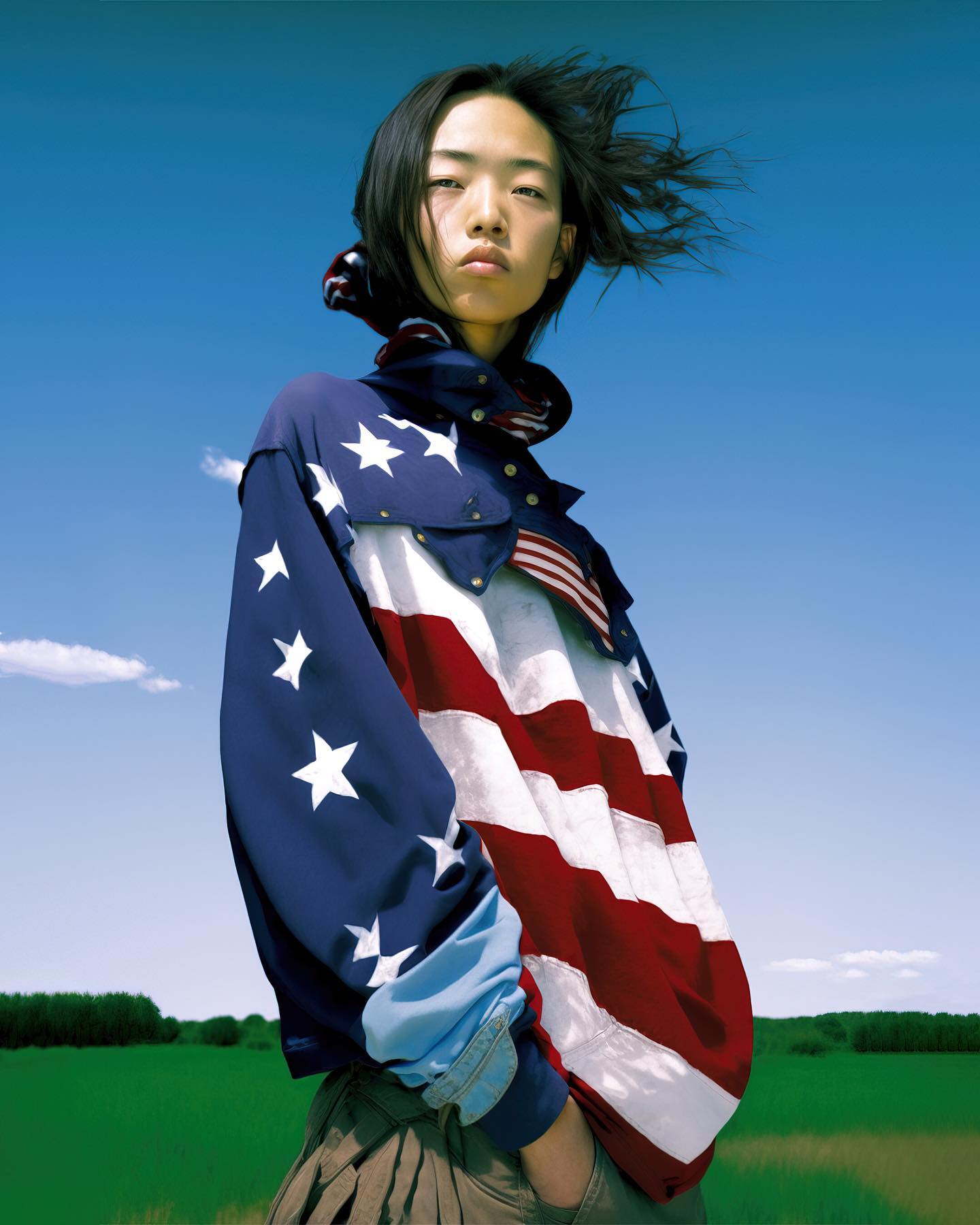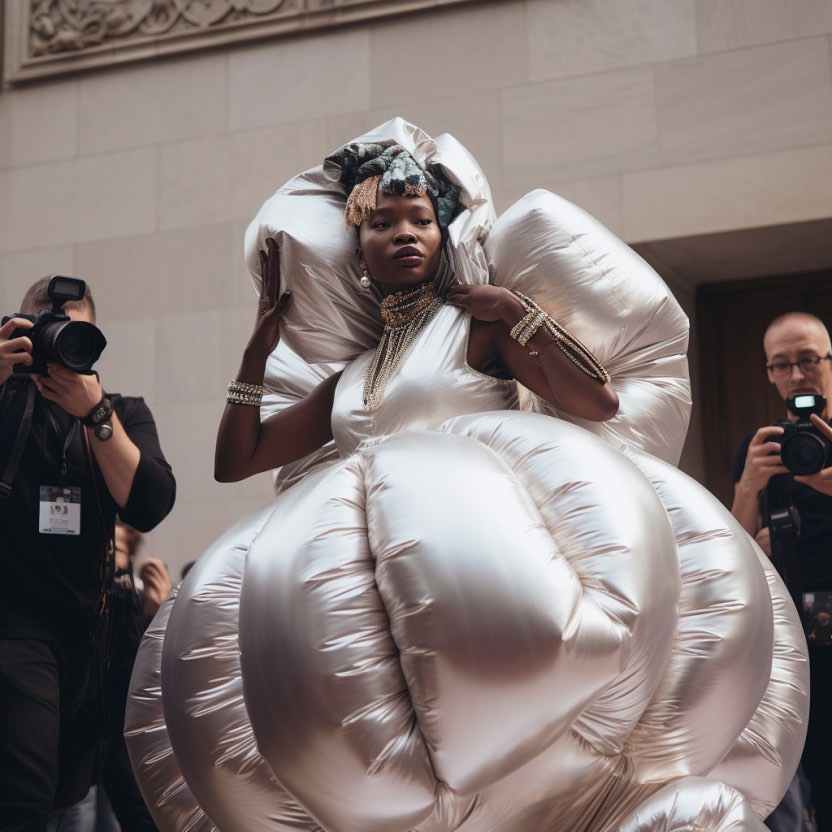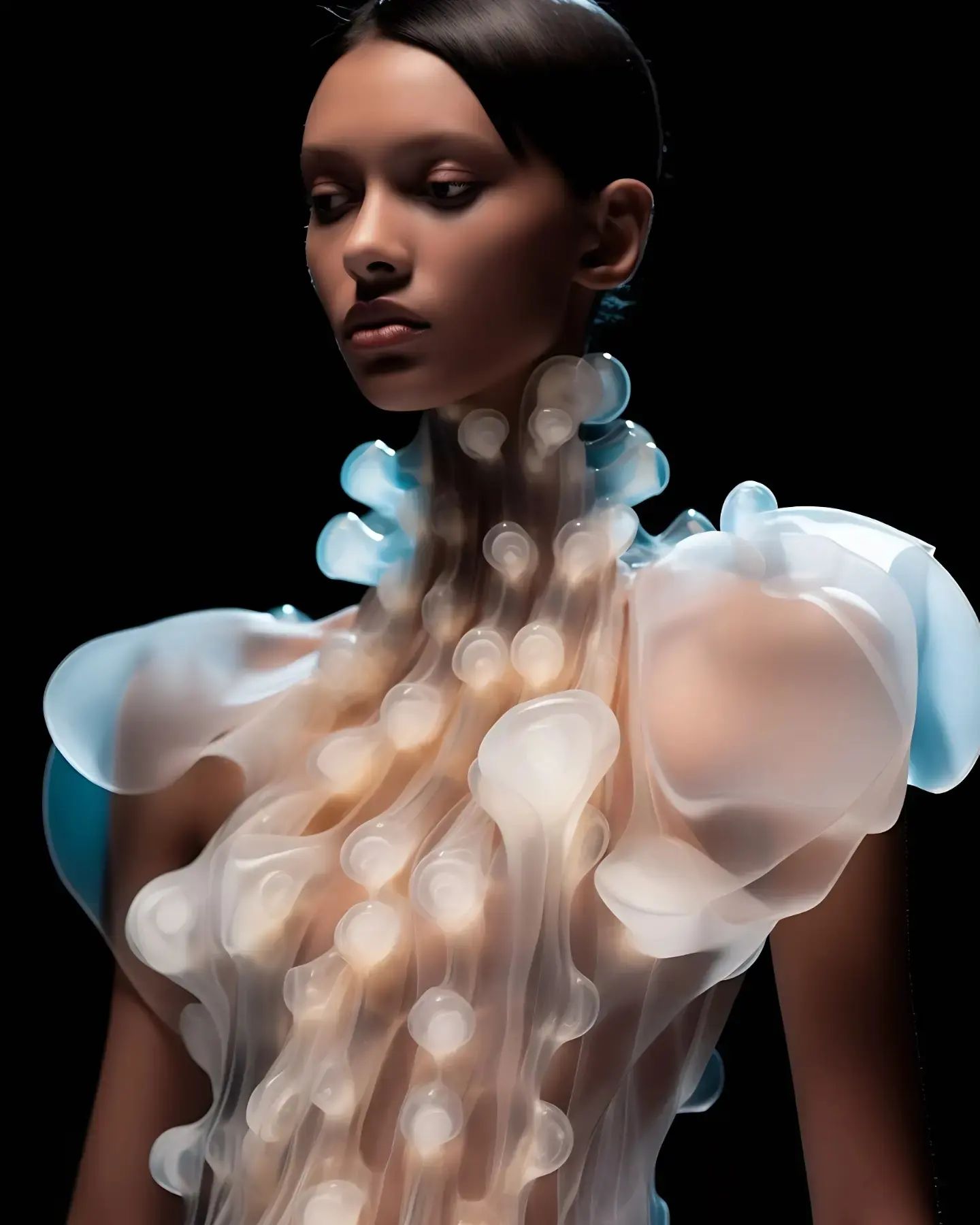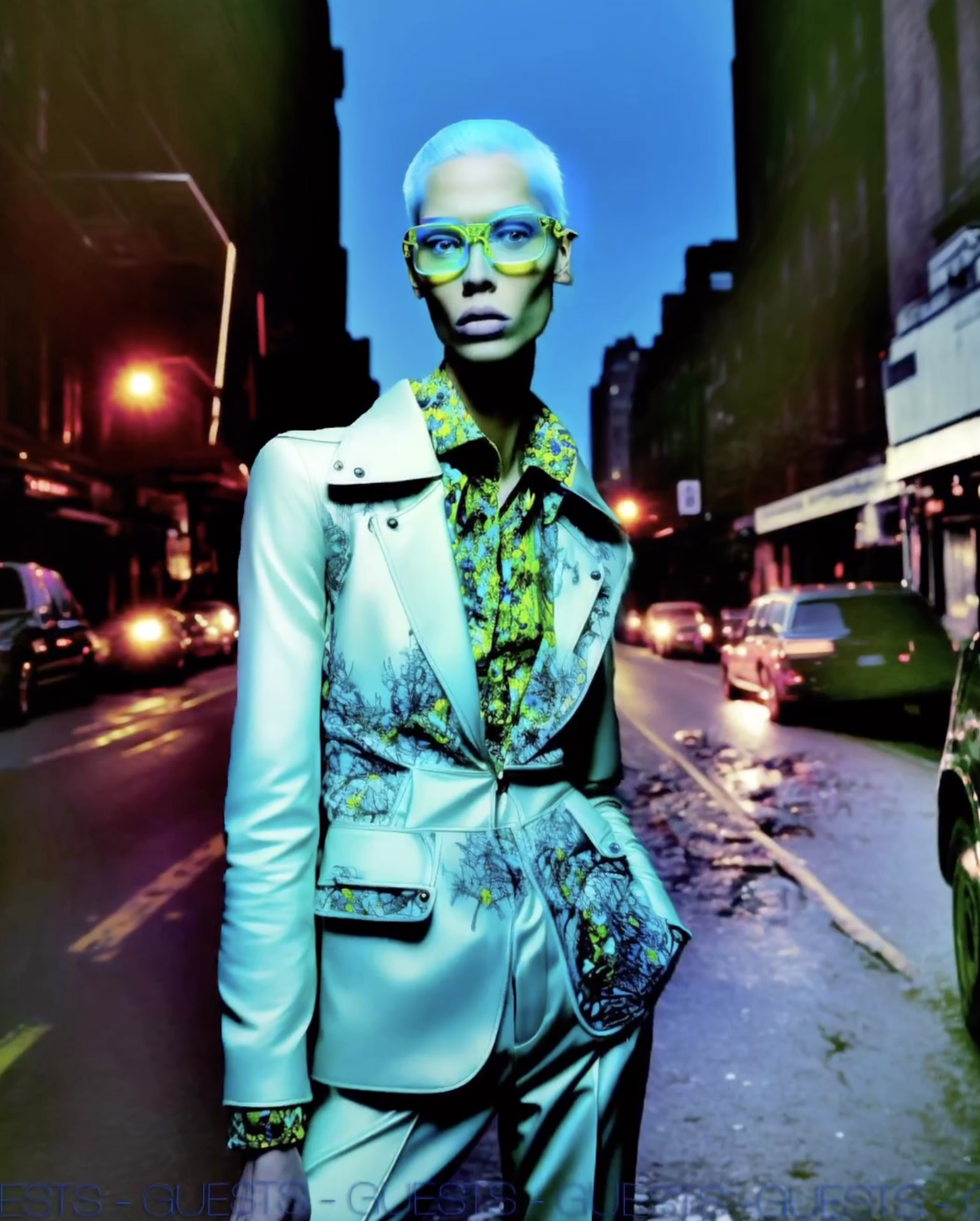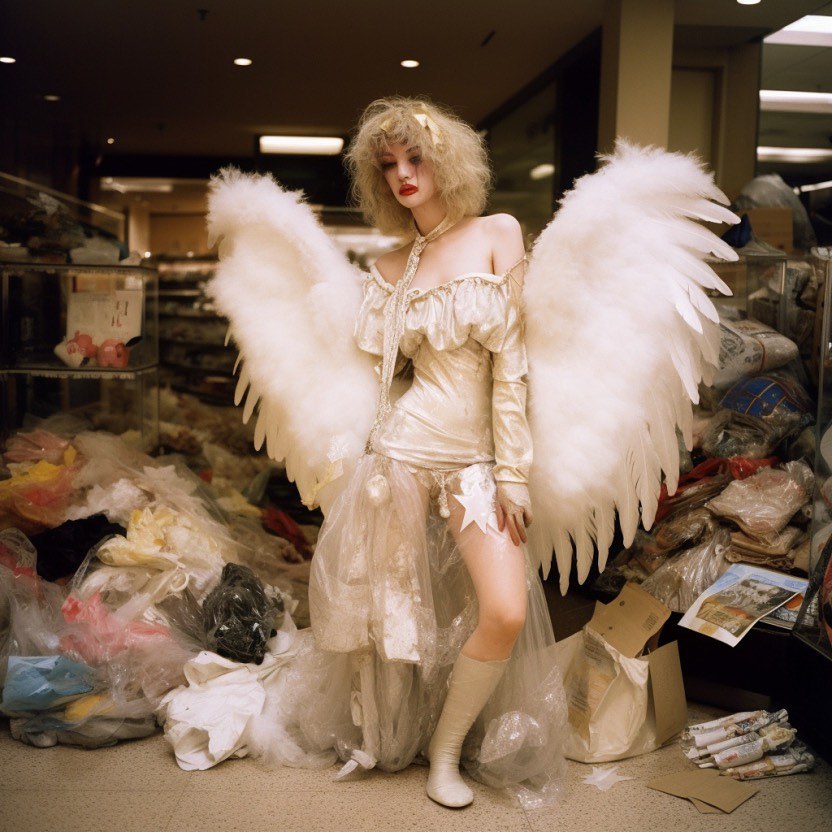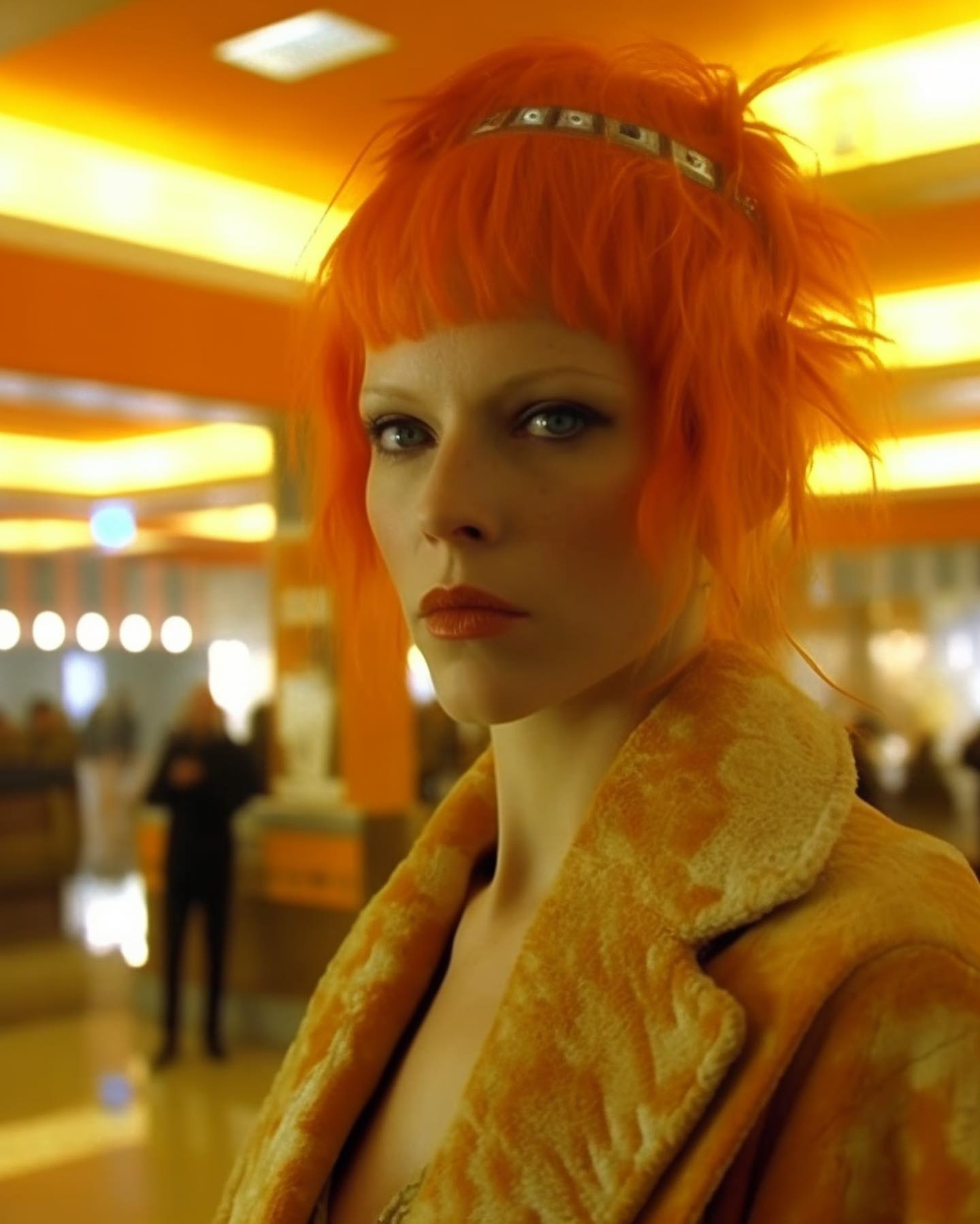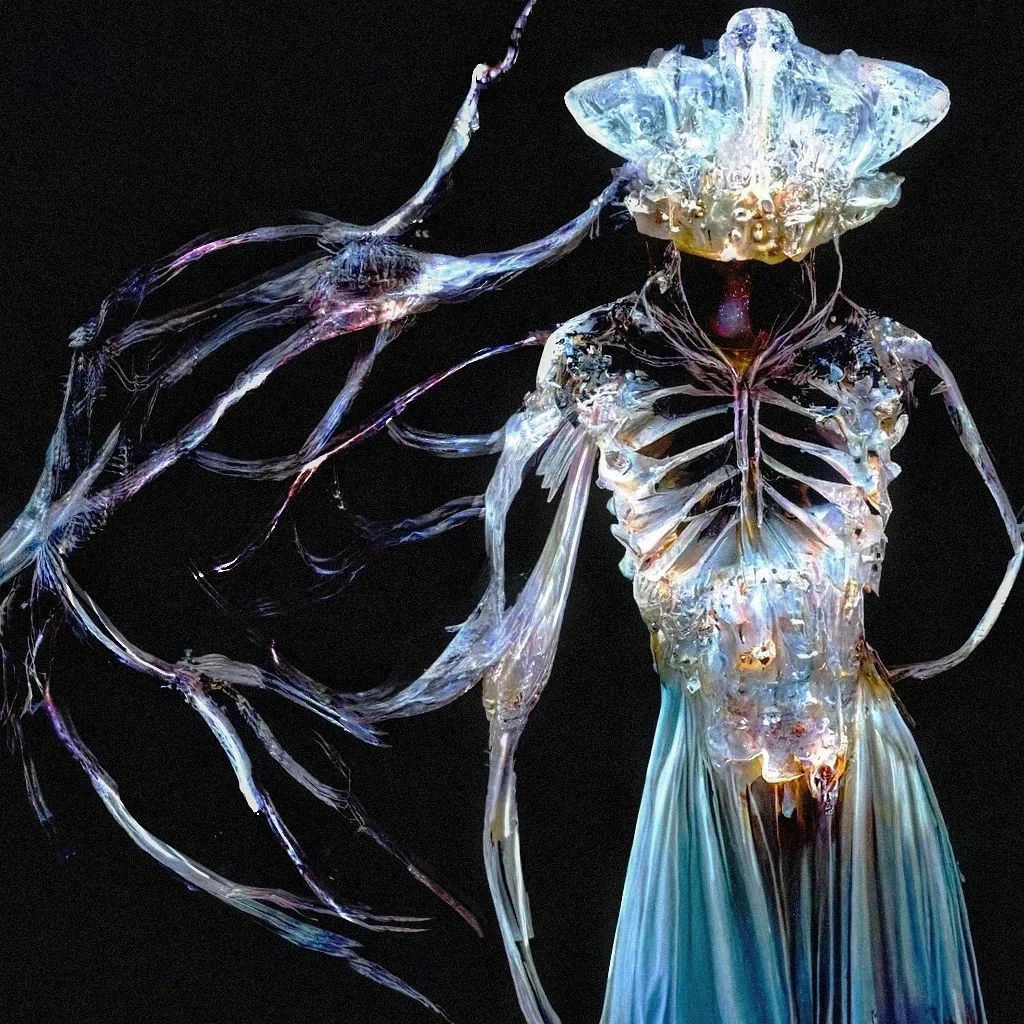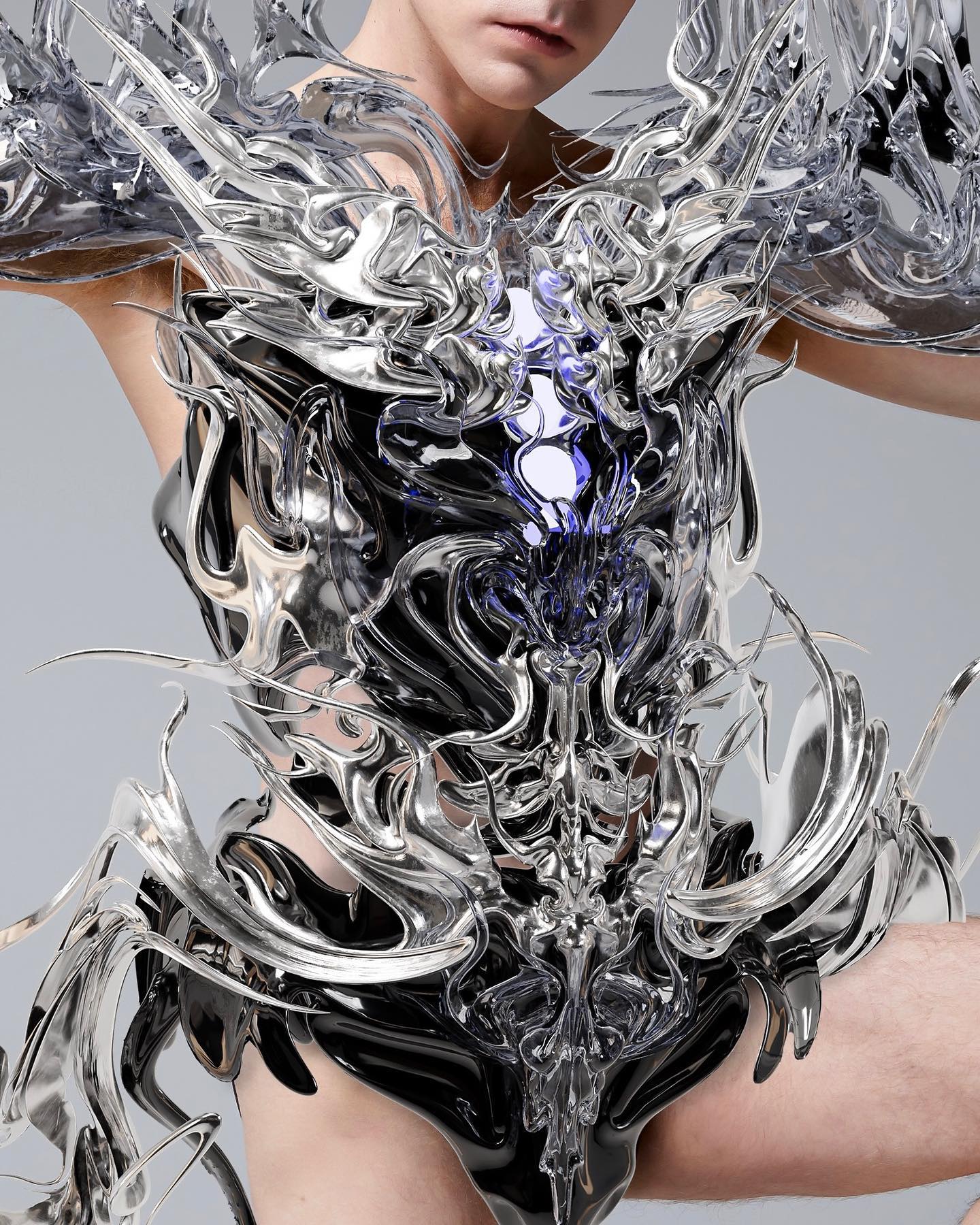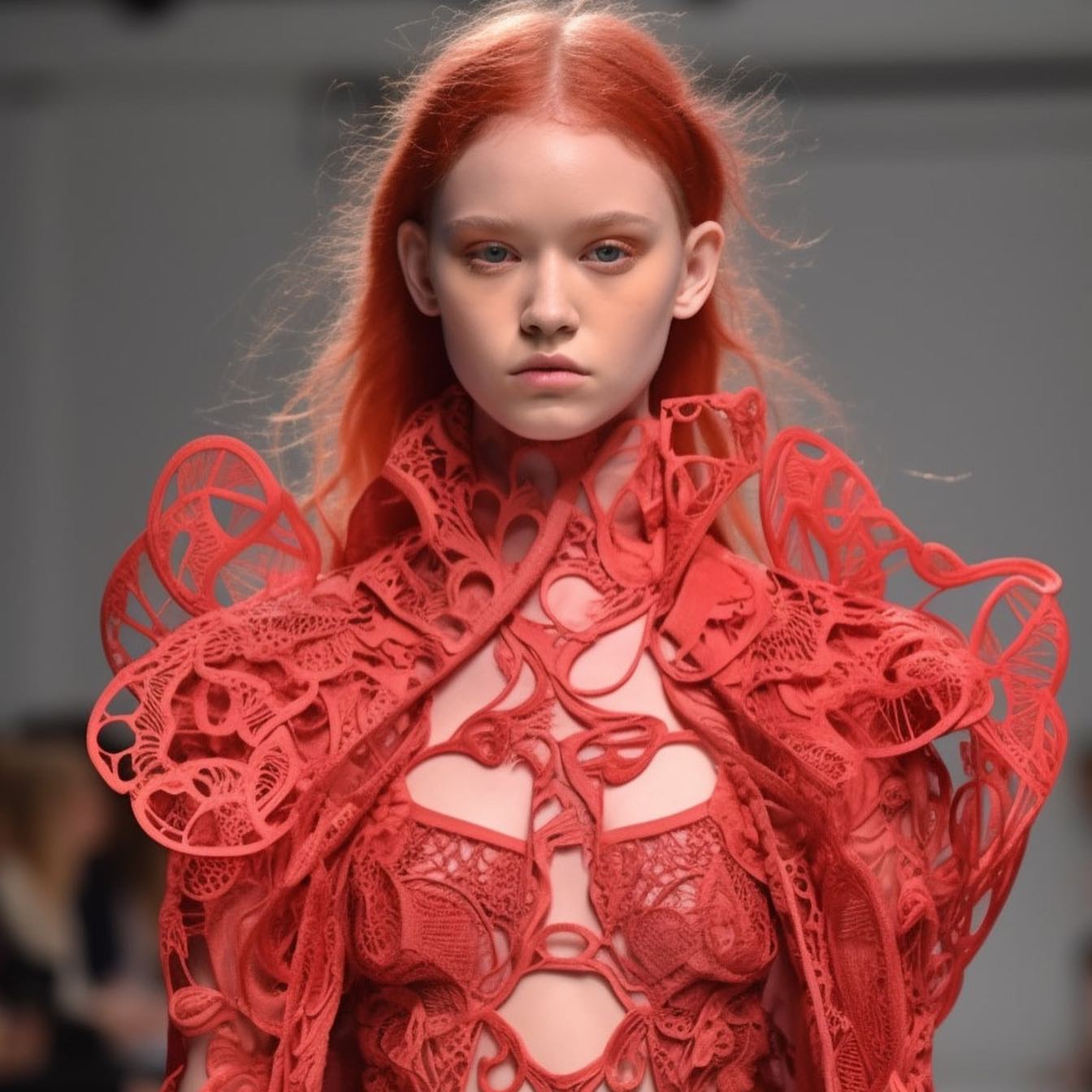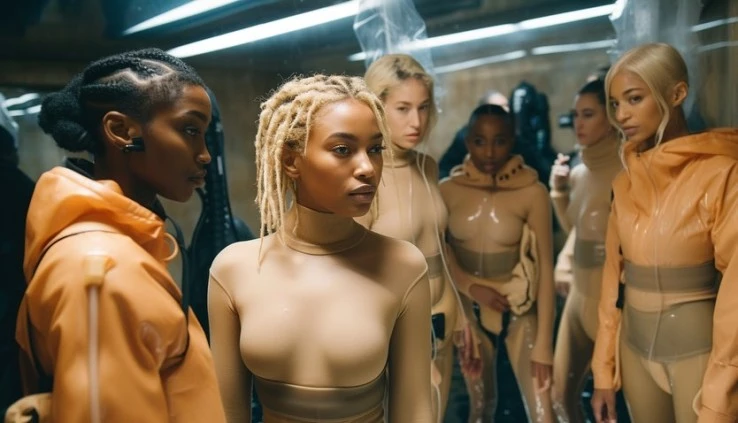
- Date
- 05 MAY 2023
- Author
- AI-GENERATED TEXT EDITED BY GLORIA MARIA CAPPELLETTI
- Image by
- Categories
- Aesthetics
Exploring the Intersection of Fashion, Desire, and AI
Let’s explore the intersection of fashion, desire, fantasy and the use of AI, to examine the complex dynamics that underlie these relationships, from the role of desire in shaping our identities to the ways in which fantasy can shape our aspirations and ideals though the use of “Generative Adversarial Networks” (GANs).
From haute couture to streetwear, fashion has the power to captivate our imaginations and inspire us to new heights of creativity and self-expression.
But what is it about fashion that makes it so compelling? What drives our desires for the latest trends and the most coveted brands? And what role does fantasy play in our relationship with fashion?
The desire to own fashionable clothing or accessories can be traced back to the basic human need for self-expression. We all want to express ourselves in unique and meaningful ways, and fashion provides us with a platform to do so. By wearing certain clothing or accessories, we can communicate our personalities, interests, and even our social status. Moreover fashion can make us look and feel good. This boost in self-esteem can have a positive impact on our overall well-being, as choosing clothing and accessories that reflect our mood or the image we want to project, we can shape our own emotional states.
Now, what happens with AI such as the use of “Generative Adversarial Networks” (GANs), and we all love Midjourney v5, which can create realistic images of objects, including clothing, that do not actually exist in real life?
It can be very effective for a fashion brand to create images that generate desire even if the clothing depicted in those images does not exist. This is because the desire for the non-existent clothing can actually be more powerful than the desire for clothing that actually exists, as it represents an unattainable fantasy that is not limited by the constraints of reality and it taps into the unconscious.
These images are often referred to as “deepfakes.” The use of GANs in fashion has become increasingly popular and fascinating, however like any technology, its use for generating fashion images has both potential benefits and potential risks, and it is up to people and organizations to manage this technology carefully in order to avoid undermining the brand’s credibility and customer loyalty. The brand must strike a delicate balance between fantasy and reality and be transparent with its customers.
We are born into a world of language and symbols, which we use to construct our sense of self and to relate to others. As this process of symbolization is never complete, there is always a residue of unarticulated desire that remains outside of the realm of language.
The desire for an object that does not exist is an expression of this fundamental lack, as it represents an attempt to fill a void or to satisfy a desire that cannot be fully articulated through language.
The object of desire represents a fantasy that is constructed in the unconscious, and it is imbued with a symbolic value that is tied to our sense of identity and our relationship to the Other.
In this sense, the desire for an object that does not exist is not a simple matter of wanting something that is unavailable or impossible to obtain. It is a complex psychic phenomenon that is tied to our sense of self and our relationship to the world around us. The AI object of desire is not simply an external thing that we desire, but it is also a projection of our own unconscious desires and fantasies.
In the context of human-AI co-creation, this desire can take the form of a fascination with the ability of AI to generate novel and unexpected images and ideas. This fascination can be seen as a form of pleasure that is associated with the excess or transgression of symbolic norms and structures.
The desire for the creations of AI represents an attempt to fill a fundamental lack that is inherent to our existence as speaking beings. This lack is tied to our relationship to the Other, which in this context can be seen as the AI itself. The creations of AI represent a form of symbolic exchange between the human subject and the AI, and they are imbued with symbolic value.
Desire can certainly trigger positive fantasy and represent a positive attitude towards the future, even if it is the desire for something that does not exist. It is through our desires that we construct our sense of identity and relate to others, and it is through our fantasies that we imagine new possibilities and potential futures.
If the act of desiring something that does not exist can be seen as a way of transcending the limitations of our existing symbolic structures and imagining new possibilities for the future, in this sense, AI desire represents a positive attitude towards the future and a refusal to accept the constraints of status quo.
AI-Generated text edited by Gloria Maria Cappelletti, editor in chief, RED-EYE
FOLLOW RED-EYE https://linktr.ee/red.eye.world
